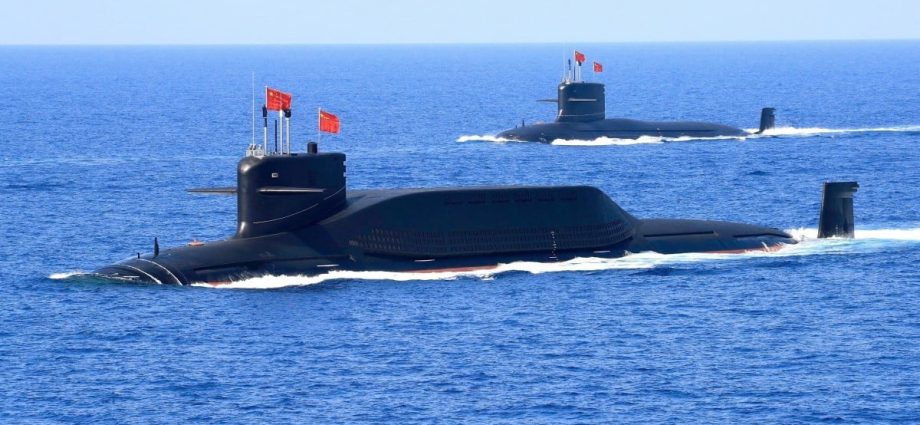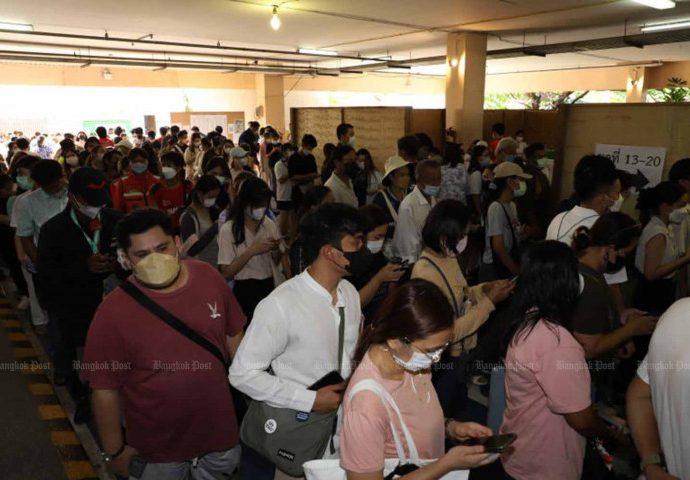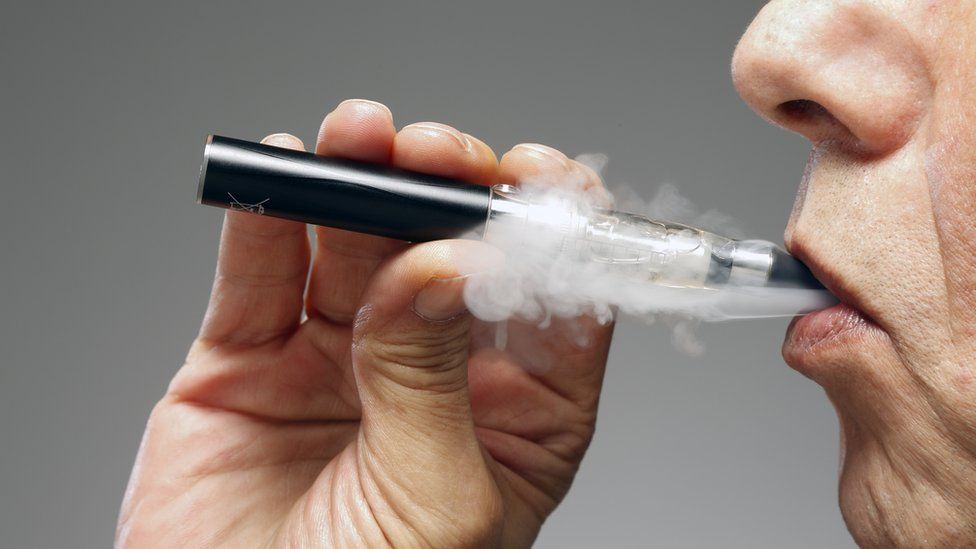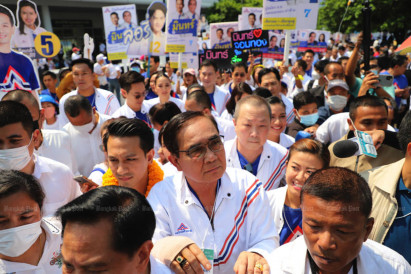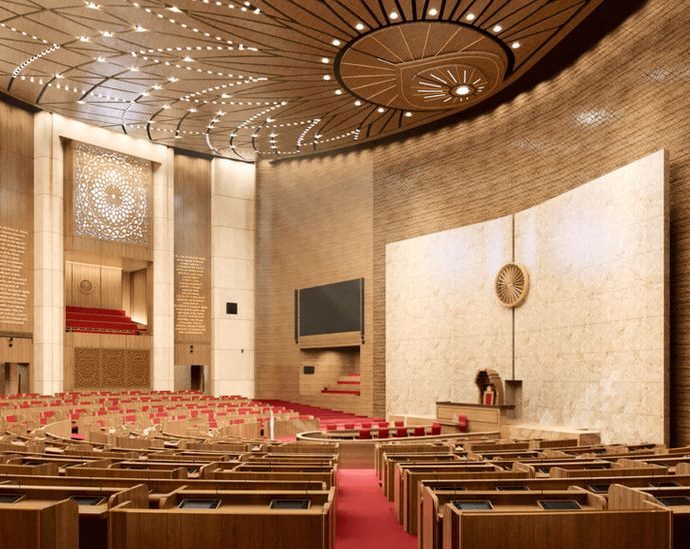Strategic value of Luzon Strait must not be overlooked

As regional geopolitical attention shifts to Taiwan and the Taiwan Strait, it is easy to overlook the Luzon Strait. Yet it is perhaps the most important strategic strait providing exit and entrance to the South China Sea. Moreover, it is the increasing focus of competing US and China intelligence, surveillance and reconnaissance (ISR) missions.
What makes it so important? The answer must be found in the context of strategic plans of both China and the US in the event of war.
The Luzon Strait is situated between Taiwan and Luzon, the northern portion of the Philippine archipelago. It connects the South China Sea to the Western Pacific. It is important for commercial shipping and cable communications that provide important links among Japan, South Korea and Southeast Asia. Such cables are quickly becoming a security issue in the region.
The South China Sea is a nexus of the US-China strategic contest for domination of the region, and Washington and Beijing have overlapping and converging strategies to win in a kinetic conflict.
Beijing is developing what the US calls an “access/area denial strategy” designed to control China’s “near seas,” particularly the South China Sea, and to prevent access by the US military assets in the event of a conflict. The US response is to prepare to cripple China’s command, control, communications, computer and ISR systems.
This is the “tip of the spear” for both, and both are trying to dominate with it on and under China’s near seas and their straits – particularly the Luzon Strait and the Bashi Channel within it.
For China, the South China Sea has historically been its vulnerable underbelly. It also harbors its vital trade routes, especially for the flow of oil and gas imports.
Most important, the South China Sea provides relative “sanctuary” for its retaliatory-strike nuclear-powered, nuclear-armed submarines based in Yulin on Hainan. These submarines are its deterrent against a first strike on it – something the US, unlike China, has not disavowed.
The US wants to deny China this sanctuary. It uses ISR probes to detect and determine the capabilities of China’s submarines, as well as to track and – in a conflict – target them. So in the event of conflict China would want to avoid having its warships, warplanes and especially its submarines bottled up in the South China Sea where they can be easily detected and destroyed.
Indeed, China would want to prevent this by having these assets break out into the vast Pacific.
Submarine access
Other straits bordering the South China Sea like the Malacca, Sunda and Balabac Straits are too narrow and shallow for submarines to pass through undetected. The Taiwan Strait is adjacent to and heavily monitored by China as well as by Taipei and the US.
This makes Luzon Strait critical in all-out war because the nuclear submarines of both China and the US have a better chance of passing through it undetected. So the Luzon Strait, and in particular the Bashi Channel, have become integrated into the nuclear strategies of both.
The strait is about 250 kilometers wide and contains the Philippine island groups of Batanes and Babuyan that are part of the province of Cagayan. North-south ridges are the prominent topographic features of the Luzon Strait. There are several channels through the ridges, of which the widest and deepest is the Bashi Channel. But all of the channels are deep enough for the passage of submarines.
The US already tries to detect and track China’s nuclear submarines as they enter and exit specially constructed subterranean home berths at Yulin. Indeed, this is the mission of many US ISR probes including the 2001 EP-3 flight that resulted in a collision with a Chinese jet fighter that became a politically dangerous international incident.
So to complete its ISR net that encloses the South China Sea, the US wants to military and intelligence control there to put a “stopper” in the Luzon Strait. The Bashi Channel is the main focus. The US frequently sends anti-submarine maritime patrols and P-8 IRS planes over the strait to detect any submarines using it.
China is particularly interested in topography, water structure and currents there. So is the US. But China is also intent on detecting US submarines moving through the strait.
Although many of its ISR probes are thought to be focused on Taiwan’s defense assets, this may not be so, or at least not the total raison d’être, especially those to the southwest and southeast of Taiwan. Indeed, several times these missions have coincided with the passage of US aircraft-carrier strike groups that are usually accompanied by submarines.
Monitoring and control of the Luzon Strait may be one purpose of the new US access to two military bases in Cagayan province adjacent to the strait. This may well mark the beginning or intensification of a contested military focus on it. Indeed, it may soon rank with the Malacca and Taiwan Straits as tinderboxes for conflict.
If this analysis is correct, it would mean that strategic thinkers in both the US and China are already preparing for conflict – even nuclear conflict. If so, the US-China South China Sea conflicts are just sparring in preparation for a possible existential nuclear contest.
China’s rival claimants and the Association of Southeast Asian Nations (ASEAN), the Philippines in particular, need to appreciate this strategic context and how they are being incorporated or affected by it – and formulate their policies with this in mind.
Tour boat catches fire at Ayutthaya river pier, no-one hurt

AYUTTHAYA: A tour boat caught fire at a boat pier in Muang district in the small hours on Sunday. There were no casualties.
The moored vessel was made out of teak wood and was a modified cargo barge.
The incident was reported to police at about 1am at a boat pier near Wat Phanan Choeng in tambon Khlong Suan Phlu.
Fire trucks and a rescue unit rushed to the spot.
The boat was engulfed in flames when they arrived. The rope used to tie the boat to the pier had been destroyed by the flames, causing the boat to drift into the middle of the Chao Phraya river.
The burning boat was towed to the river bank where the fire was subsequently put out.
An investigation was underway to establish the cause of the blaze. The damage was being assessed.
Nobody was hurt as the boat was not being used but moored at the pier.
Boat catches fire at river pier

AYUTTHAYA: A tour boat, which was modified from a cargo barge made of teak wood, caught fire while being moored at a boat pier in Muang district in the small hours on Sunday. There were no casualties.
The incident was reported to police at about 1am at a boat pier near Wat Phanan Choeng in tambon Khlong Suan Phlu. Fire trucks and a rescuer unite were rushed to the spot.
The boat was engulfed in flames when they arrived. The rope which was used to tie the boat to the pier was burned by the fire and cut off, causing the boat to drift into the middle of the Chao Phraya river.
The burning boat was towed to the river bank where the fire was subsequently put out.
An investigation was underway to establish what caused the fire. The damage was being assessed.
Nobody was hurt as the boat was not being used but moored at the pier.
Most believe information operations waged during election: Nida Poll

Most people believe information operations had been waged by political parties during the lead-up to the May 14 election, both to smear rivals and to win popularity, according to a survey by the National Institute of Development Administration, or Nida Poll.
The poll was carried out on May 18-22 by telephone interviews with 1,310 people aged 18 and over of various levels of education, occupations and incomes throughout the country to compile their opinions on information, both true and false, they received them during the election and disseminated on social media.
Asked whether they believed information operations had been waged by political parties on social media to attack or smear rivals, a majority or 56.49% said “yes” – 31.22% moderately and 25.27% highly. On the other side, 23.59% said “no”, definitely, and 19.31% said “no” but in a lesser degree. The rest, 0.61%, had no answer or were not interested.
Asked whether they believed political parties had waged information operations on social media to win popularity, a majority or 57.48% said “yes” – 30.08% moderately and 27.40% highly. On the other side, 22.06% said “no” definitely and 19.54% said “no” but in a lesser degree. The rest, 0.92%, had no answer or were not interested.
Asked whether they believed other countries had interfered in the election, a majority or 78.77% said “no” – 56.56% definitely and 22.21% in a lesser degree. On the other side, 8.17% said “yes”, highly, and 11.76% moderately. The rest, 1.30%, had no answer or were not interested.
Most believe misinformation used during election: poll

Most people believe political parties issued misinformation during the lead-up to the May 14 election, both to smear rivals and to win popularity, according to a survey by the National Institute of Development Administration, or Nida Poll.
Asked whether they believed the parties used social media to attack or smear rivals, a majority or 56.49% said “yes” – 31.22% to a moderate degree and 25.27% a lot. On the other side, 23.59% said “definitely not”, while 19.31% said “yes, but only to a small degree”. The rest, 0.61%, had no answer or were not interested.
Asked whether they believed political parties had posted misinformation on social media to win popularity, a majority or 57.48% said “yes” – 30.08% to a moderate extent and 27.40% a lot. On the other side, 22.06% said “definitely not” and 19.54% said “yes, but only to a small degree”. The rest, 0.92%, had no answer or were not interested.
Asked whether they believed other countries had interfered in the election, a majority or 78.77% said “no” – 56.56% “not at all” and 22.21% “to a small degree”. On the other side, 8.17% said “yes, a lot” and 11.76% somewhat. The rest, 1.30%, had no answer or were not interested.
The poll was carried out on May 18-22 by telephone interviews with 1,310 people aged 18 and over of various levels of education, occupations and incomes throughout the country to compile their opinions on the information, both true and false, issued by the parties and disseminated on social media.
Chinese comedy group punishment sends chills through arts sphere
BEIJING: China’s recent punishment of a comedy studio has sent a chill through the country’s cultural sphere – a striking reminder of the increasingly limited public space for artistic expression under President Xi Jinping. Authorities last week fined Xiaoguo Culture Media millions of dollars and suspended their performances indefinitely afterContinue Reading
The Indian woman who writes exams for others who can’t
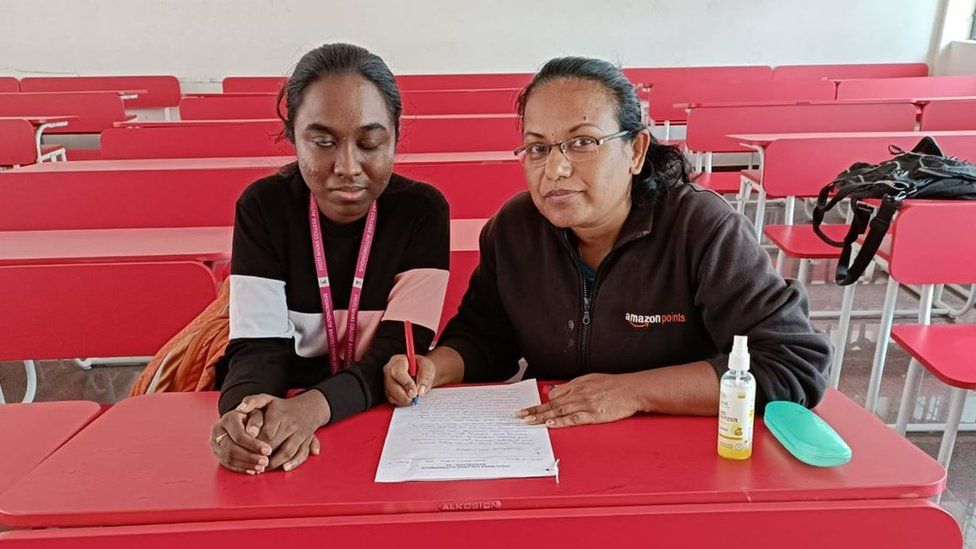 Pushpa
Pushpa In 2007, a blind man asked Pushpa to guide him across a busy road in Bengaluru, a teeming metropolis in southern India. After they reached the other side, he made another request which changed her life.
“He asked me if I could write an exam for his friend,” recalls Pushpa, who goes by one name.
She said yes, but when the day came, her excitement gave way to anxiety. She had never written an exam for someone else and didn’t know what to expect.
Many Indian students with physical or learning disabilities use a scribe to write exams on their behalf. They dictate answers to the scribe, who notes them down. As per government guidelines, scribes are not allowed to write for any subject they themselves have studied at university level. They can get a defined fee for exams conducted by the government, but most of the time, the work is voluntary.
“It was three hours of tension. The candidate was dictating the answers very slowly and was asking me to read out the questions again and again,” says Pushpa, who chose to help out for free.
But she did enough to help 19-year-old Hema (who uses one name) pass her school final exams.
Soon, an NGO working with blind people approached Pushpa for help and then other students. In the past 16 years, Pushpa has written over 1,000 exams, free of charge.
“Exam halls are like a second home for me,” she tells the BBC.
In addition to school and university exams, Pushpa has also helped candidates appearing in entrance exams and selection tests for government jobs.
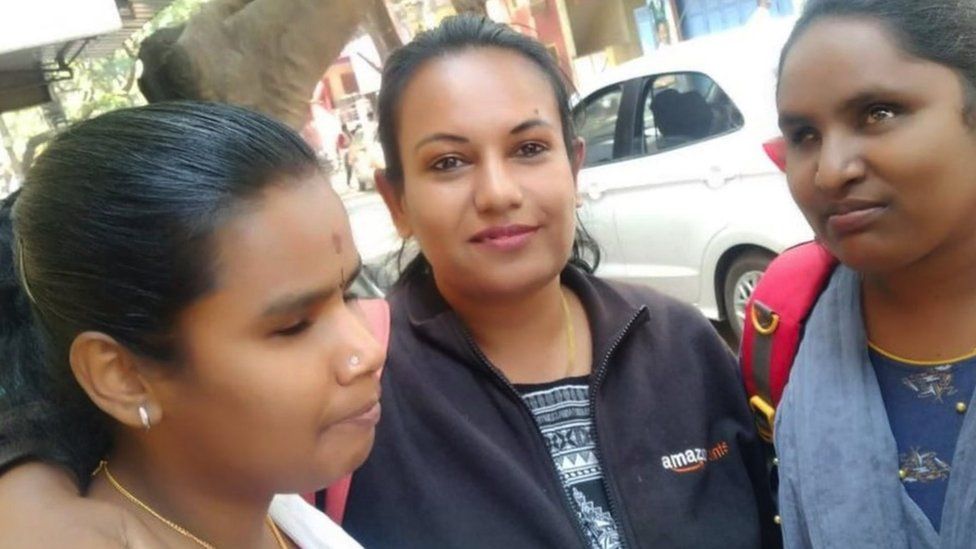
“Now it is routine work for me. I don’t feel any stress,” she says, adding that the experience has helped her learn about many subjects she had no knowledge in – from history to statistics.
She has helped blind students, those with cerebral palsy, Down’s syndrome, autism, dyslexia and students incapacitated by accidents.
But it can be challenging sometimes. When working with students with cerebral palsy, which often impairs speech, Pushpa says she has to “concentrate hard and look at their [the students’] lip movements to try to understand words”.
But she takes it in stride. She has helped Karthik (he goes by one name), who uses a wheelchair, write 47 exams.
It was a crises that forged their long association. During a school exam, Kartik’s scribe left abruptly and Pushpa stepped in to help. The 25-year-old says he greatly appreciates her continual support since then.
“I’m lucky to get a scribe like Pushpa. Scribes are really like gods for us,” he says.
Working together for years has given them a great understanding of each other – Karthik has now graduated and is preparing for government clerical recruitment exams.
“I have written multiple exams for many students and each one has a unique story,” Pushpa says.
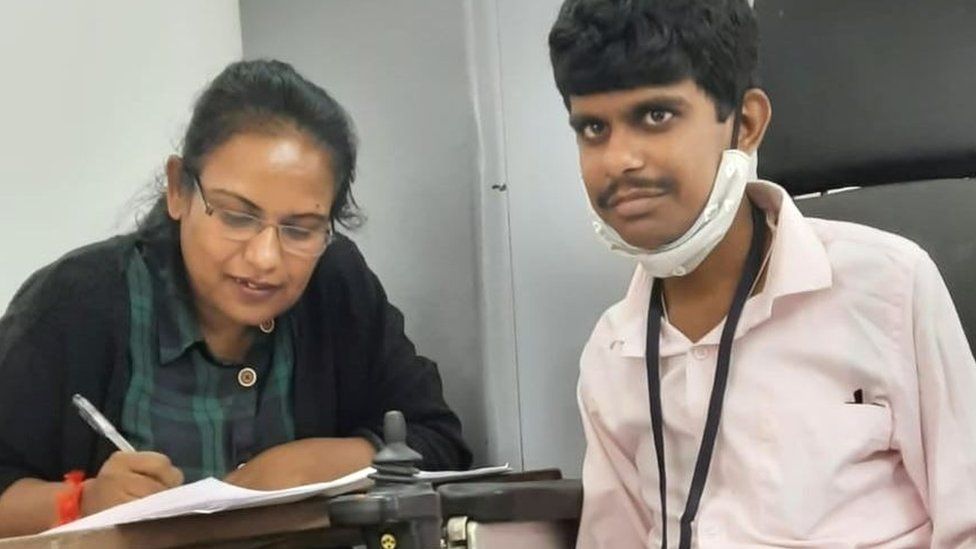
In the third week of March, Pushpa wrote a university degree exam paper for 19-year-old Bhoomika Valmiki.
Ms Valmiki, who is blind, uses tools that convert text to audio to study, but such apps cannot be used during exams.
“I can only move forward in my life if Pushpa writes for me,” Ms Valmiki says.
“Pushpa was very patient and waited till I finished my answers. She never distracted me and repeated my answers before writing them down,” she adds.
Most people who seek Pushpa’s help have struggled to get into university, yet she says her empathy won’t undermine her integrity.
“My job is to write what they say,” she says. “I have no choice when they ask me to tick a wrong answer or dictate a sentence which is grammatically incorrect. I can’t intervene.”
When students who speak other languages struggle to understand English words she translates the word for them. “That is the only help I give,” Pushpa says.
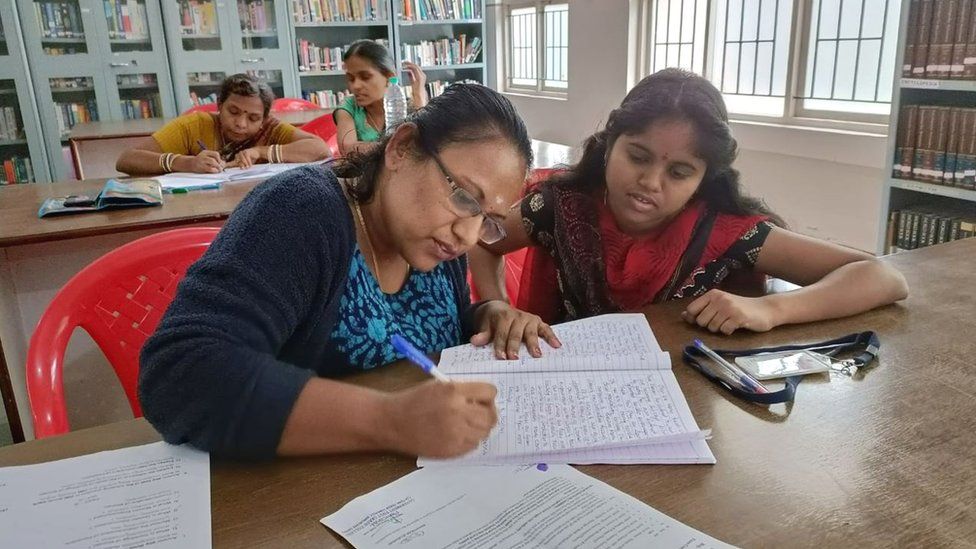
Pushpa comes from a poor family. After her father was injured in an accident, her mother worked hard to feed her and her brother.
“At one point, me and my brother had to drop out of school because we couldn’t pay fees,” she recalls.
A stranger stepped in to help and Pushpa says she volunteers as a scribe to give back this goodness to society.
She has taken up several small jobs over the years to make a living, but the past few years have been particularly hard.
In 2018, her father died and in 2020, her brother passed away. A year later, Pushpa, who was then unemployed, got some more bad news.
“In May 2021, my mother passed away. A few months later, in August, I wrote 32 exams. Some days I would write two exams.”
She says she found scribing therapeutic and helpful in overcoming her grief.
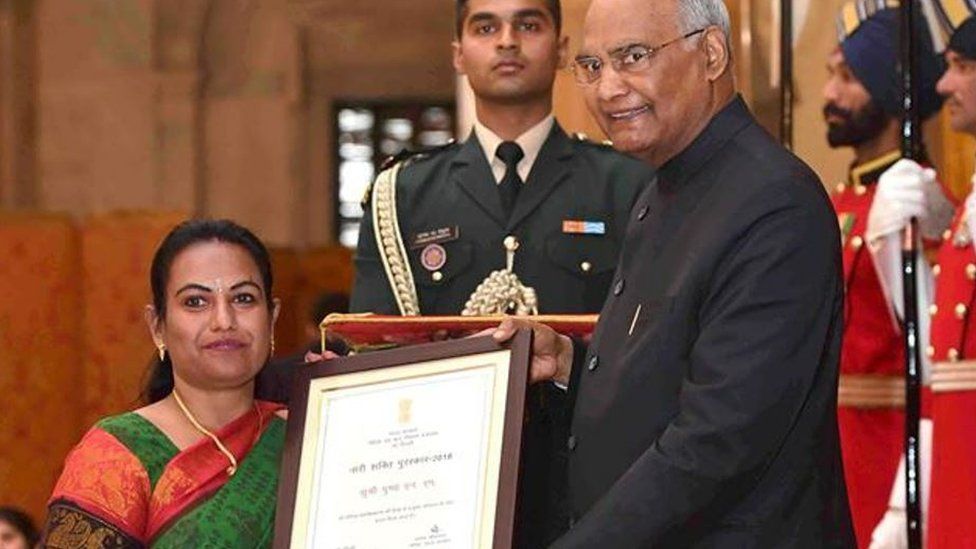
Her tireless work has not gone unnoticed. On 8 March 2018, she was honoured by the then Indian president, Ram Nath Kovind, for her efforts. She also met Prime Minister Narendra Modi along with other award winners.
Pushpa now works in a tech start-up and gives motivational talks at corporate events.
But she still writes exams for those who cannot, and since she can speak and write in five Indian languages – Tamil, Kannada, English, Telugu and Hindi – there’s plenty of demand for her services.
“I give my time and energy. If I write an exam for someone, it changes their life,” she says.
-
-
9 November 2022
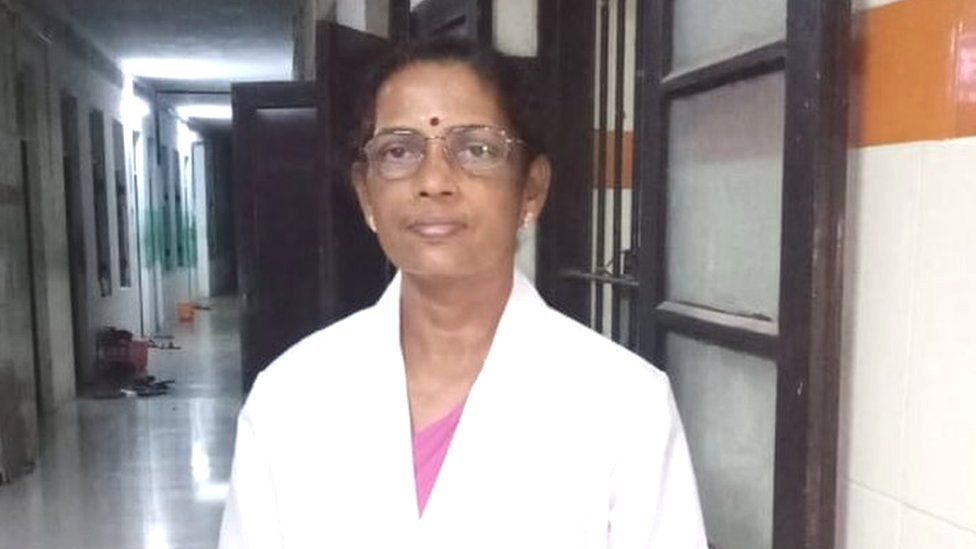
-
Why Australia decided to quit its vaping habit
 AleksandrYu
AleksandrYu“The horse has bolted now, they are addicted,” says Chris, a high school teacher in New South Wales.
He’s talking about students in his class, teenagers, who can’t stop vaping.
He sees the effect of the candy-flavoured, nicotine-packed e-cigarettes on young minds every day, with children even vaping in class.
“The ones who are deepest into it will just get up out of their seat, or they’ll be fidgeting or nervous. The worst offenders will just walk out because they’re literally in withdrawal.”
Those who are most addicted need nicotine patches or rehabilitation, he says, talking about 13 and 14-year-olds.
Earlier this month the government decided enough is enough and introduced a range of new restrictions. Despite vapes already being illegal for many, under new legislation they will become available by prescription only.
The number of vaping teenagers in Australia has soared in recent years and authorities say it is the “number one behavioural issue” in schools across the country.
And they blame disposable vapes – which some experts say could be more addictive than heroin and cocaine – but for now are available in Australia in every convenience store, next to the chocolate bars at the counter.
For concerned teachers like Chris, their hands have been tied.
“If we suspect they have a vape, all we can really do is tell them to go to the principal’s office.
“At my old school, my head teacher told me he wanted to install vape detector alarms in the toilet, but apparently we weren’t allowed to because that would be an invasion of privacy.”
E-cigarettes have been sold as a safer alternative to tobacco, as they do not produce tar – the primary cause of lung cancer.
Some countries continue to promote them with public health initiatives to help cigarette smokers switch to a less deadly habit.
Last month, the UK government announced plans to hand out free vaping starter kits to one million smokers in England to get smoking rates below 5% by 2030.
But Australia’s government says that evidence that e-cigarettes help smokers quit is insufficient for now. Instead, research shows it may push young vapers into taking up smoking later in life.
‘Generation Vape’
Vapes, or e-cigarettes, are lithium battery-powered devices that have cartridges filled with liquids containing nicotine, artificial flavourings, and other chemicals.
The liquid is heated and turned into a vapour and inhaled into the user’s lungs.
Vaping took off from the mid-2000s and there were some 81 million vapers worldwide in 2021, according to the Global State of Tobacco Harm Reduction group.
Fuelling the rise is the mushrooming popularity of flavoured vapes designed to appeal to the young.
These products can contain far higher volumes of nicotine than regular cigarettes, while some devices sold as ‘nicotine-free’ can actually hold large amounts.
The chemical cocktail also contains formaldehyde, and acetaldehyde – which have been linked to lung disease, heart disease, and cancer.
There’s also a suggestion of an increased risk of stroke, respiratory infection, and impaired lung function.
Experts warn not enough is known about the long-term health effects. But some alarming data has already been drawn out.
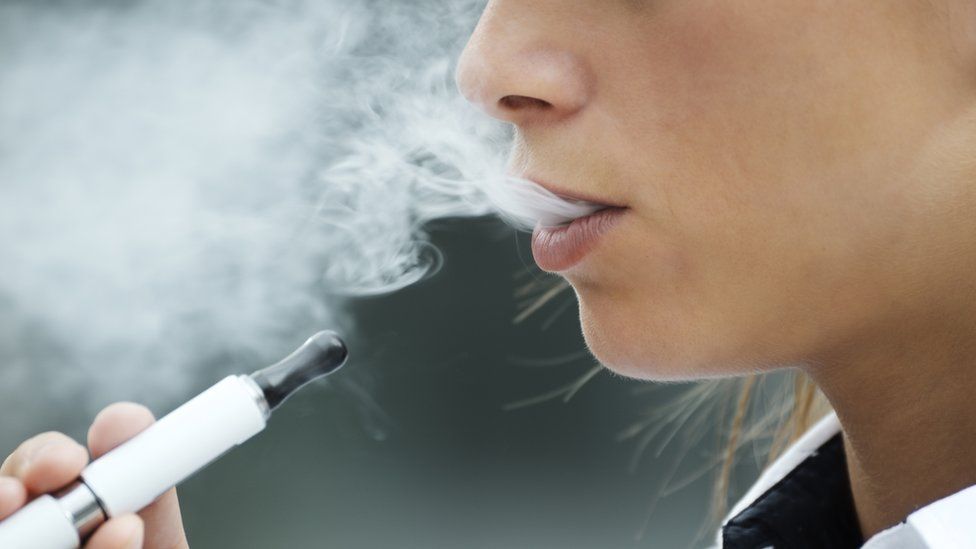
In 2020, US health authorities identified more than 2,800 cases of e-cigarette or vaping-related lung injury. The Centers for Disease Control and Prevention found 68 deaths attributed to that injury.
In Australia, a major study by leading charity The Cancer Council found more than half of all children who had ever vaped had used an e-cigarette they knew contained nicotine and thought that vaping was a socially acceptable behaviour.
School-age children were being supplied with e-cigarettes through friends or “dealers” inside and outside school, or from convenience stores and tobacconists, the report said.
Teens also reported purchasing vapes through social media, websites and at pop-up vape stores, the Generation Vape project found.
“Whichever way teenagers obtain e-cigarettes, they are all illegal, yet it’s happening under the noses of federal and state authorities”, report author and Cancer Council chair Anita Dessaix said.
“All Australian governments say they’re committed to ensuring e-cigarettes are only accessed by smokers with a prescription trying to quit – yet a crisis in youth e-cigarette use is unfolding in plain view.”
In addition to the government’s move to ban the import of all non-pharmaceutical vaping products – meaning they can now only be bought with a prescription – all single-use disposable vapes will be made illegal.
The volume and concentration of nicotine in e-cigarettes will also be restricted, and both flavours and packaging must be plain and carrying warning labels.
But these new measures are not actually all that drastic, says public health physician Professor Emily Banks from the Australian National University.
“Australia is not an outlier. It is unique to have a prescription-only model, but other places actually ban them completely, and that includes almost all of Latin America, India, Thailand and Japan.”
‘We have been duped’
Health Minister Mark Butler said the new vaping regulations will close the “biggest loophole in Australian healthcare history”.
“Just like they did with smoking… ‘Big Tobacco’ has taken another addictive product, wrapped it in shiny packaging and added sweet flavours to create a new generation of nicotine addicts.”
“We have been duped”, he said.
Medical experts agree. Prof Banks argues that the promotion of e-cigarettes as a “healthier” alternative was a classic “sleight-of-hand” from the tobacco industry.
As such vaping has become “normalised” in Australia, and in the UK too.
“There’s over 17,000 flavours, and the majority of use is not for smoking cessation”, she tells the BBC.
“They’re being heavily marketed towards children and adolescents. People who are smoking and using e-cigarettes – that’s the most common pattern of use, dual use.”
Professor Banks says authorities need to “de-normalise” vaping among teenagers and make vapes much harder to get hold of.
“Kids are interpreting the fact that they can very easily get hold of [vapes] as evidence [they’re safe], and they’re actually saying, ‘well, if they were that unsafe, I wouldn’t be able to buy one at the coffee shop’.
But could stricter controls make it harder for people who do turn to vapes hoping to quit or cut down on tobacco?
“It is important to bear in mind that for some people, e-cigarettes have really helped. But we shouldn’t say ‘this is great for smokers to quit’, says Prof Banks.
“We know from Australia, from the US, from Europe, that two-thirds to three-quarters of people who quit smoking successfully, do so unaided.”
“You’re trying to bring these [vapes] in saying they’re a great way to quit smoking, but actually we’ve got bubble gum flavoured vapes being used by 13-year-olds in the school toilets. That is not what the community signed up for.”
-
-
29 September 2022

-
-
-
24 June 2022

-
Wherever UTN goes, so must Prayut
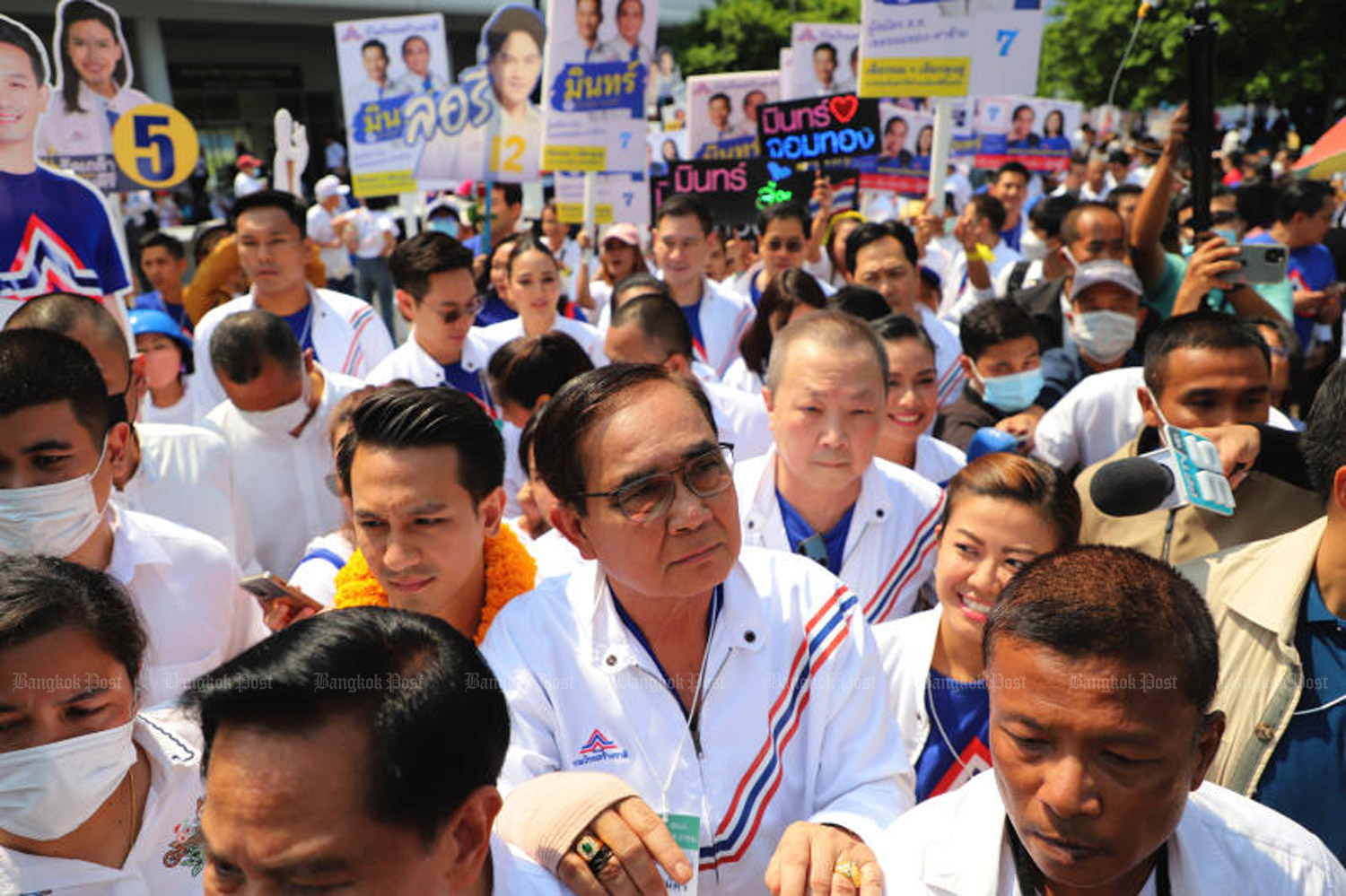
The United Thai Nation (UTN) Party could join the coalition alliance if Prime Minister Prayut Chan-o-cha remains in the group, said UTN secretary-general Akanat Promphan on Saturday.
However, Mr Akanat said the party will not join the coalition which the Move Forward Party (MFP) is trying to put together if Gen Prayut is excluded. Some have called for Gen Prayut to be left out of any such arrangement.
Nor would UTN agree to any attempt to change Section 112, the so-called lese majeste law, which is one of the coalition’s key policy planks. “The UTN’s newly-elected MPs can perform their duties regardless and the party needs to make sure the coalition has the same direction in politics,” he said.
“As for Gen Prayut, we nominated him as our prime ministerial candidate. Despite being defeated, he can still be the party’s strategy team chairman.” Asked what will happen if MFP and Pheu Thai fail to cobble together a government, he said the UTN has not thought that far ahead. “We’re focusing on the present.”
New parliament: PM Modi set to inaugurate building amid Opposition boycott
 Government of India
Government of IndiaPrime Minister Narendra Modi is set to inaugurate India’s new parliament building despite a boycott of the ceremony by 19 opposition parties.
The opposition has criticised the government for not asking the president to open the new building.
They also denounced the decision to hold the event on the birth anniversary of Hindutva ideologue VD Savarkar.
The ruling Bharatiya Janata Party (BJP) has called the boycott a “disrespect of democracy”.
The new parliament building is part of the government’s ambitious project to develop the Central Vista power corridor in capital Delhi.
On Sunday, as the new building is inaugurated, Mr Modi will also unveil a new 75-rupee coin to commemorate the event and serve as a tribute to 75 years of India’s independence.
Built in front of the colonial-era parliament, the new four-storey building – built at an estimated cost of 9.7bn rupees ($117.1m, £94.2m) – has increased seating capacity.
The Lok Sabha chamber, which will seat the lower house of the parliament, is designed in the likeness of a peacock, India’s national bird. The Rajya Sabha chamber, which will seat the lower house, is designed resemble the lotus, India’s national flower.

On Wednesday, 19 parties – including the main opposition Congress – announced their “collective decision” to boycott the inauguration ceremony.
Congress president Mallikarjun Kharge and party leader Rahul Gandhi said that the building should have been inaugurated by President Draupadi Murmu, the parliament’s highest constitutional authority.
Congress MP Jairam Ramesh also criticised the government’s decision to hold the event “on the birth anniversary of the man [Savarkar] who opposed Mahatma Gandhi vehemently all his life”.
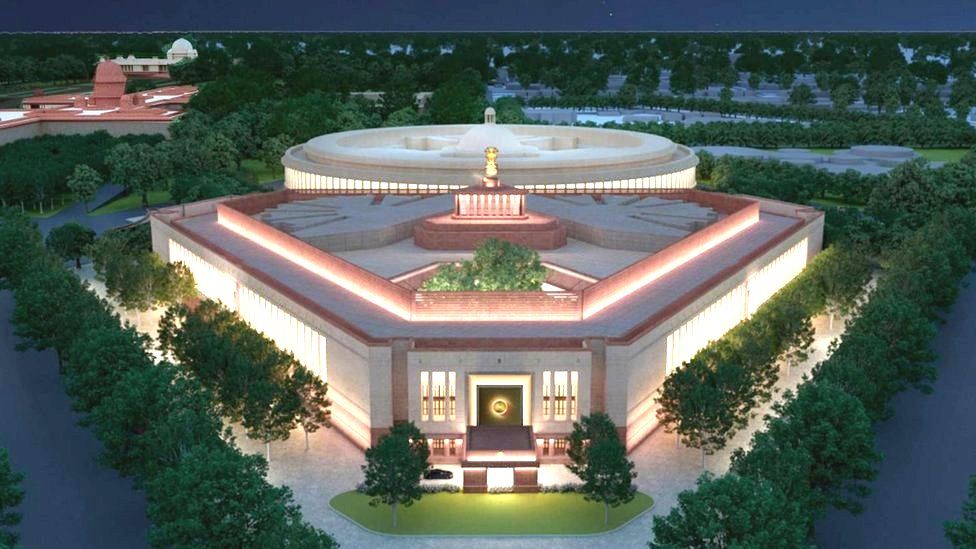
Commentators say the row reflects a fractious milieu where the ruling party and the opposition are unable to reach an agreement on most issues.
“Both sides need to find a way out of the separate corners they have backed themselves into. They must do so because history will not forgive them if they won’t,” The Indian Express newspaper argued in an editorial. “They must do so, for the sake of the people, and for the people’s parliament.”
As the new parliament is inaugurated, it will also witness protests by India’s top wrestlers outside the building.
The wrestlers, including Olympic medallists, have been on a months-long protest at Jantar Mantar, a heritage site in the capital Delhi, demanding the resignation and arrest of their wrestling federation president, Brij Bhushan Singh
Singh, an influential lawmaker and politician from BJP, is accused of sexual abuse and harassment of female wrestlers – allegations he denies.

Read more India stories from the BBC:
- Indian wrestler whose ‘marriage bout’ no one could win
- The man who made Hindu nationalist politics acceptable
- India and Australia announce migration deal
- Is India batter Shubman Gill cricket’s next big thing?
- Indian wrestlers risk Olympic dream for ‘#MeToo’ protest
- Political row over India’s new parliament openingIndian banks start exchanging withdrawn top currency


